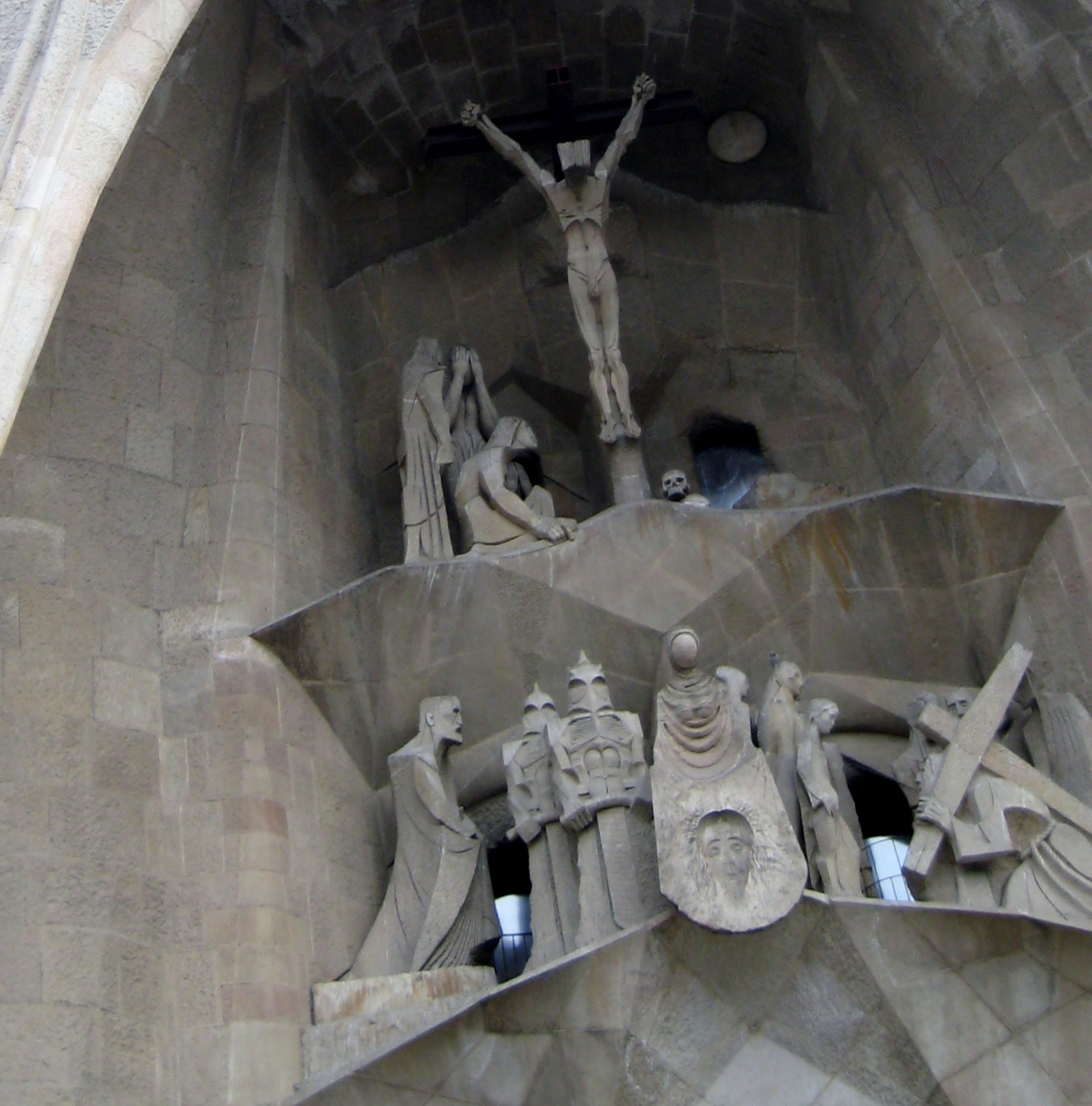I first saw the Sagrada Familia basilica/church, what there was of it, in 1992, during a break (for me) at the Barcelona Olympics.
I remember leaving with two impressions:
1. That thing was so far from completion, it was hardly worth seeing. Maybe one wall was up? In fact, I recall getting back on a bus within minutes of arrival with an attitude of, “Nothin’ to see here …”
2. The architecture of the place was so wacky (the mind of Antoni Gaudi at work) that it could not possibly be a church. It was whimsical and perhaps even profane/disturbing, I thought, in an environment calling for dignity and more traditional forms.
Twenty years later, I returned to the site of the Sagrada Familia, and I have changed my mind.
It helps, tons, that construction has forged ahead. It must seem incremental to anyone who lives in Barcelona, but seeing it after an interval of 20 years, the change is dramatic.
The main sanctuary now is enclosed, and much of the work on the lower parts of the Sagrada Familia are complete. Inside and out. Or close to it.
It can be, and in my opinion is, more than suitable as a place of worship. The images may not look at all like what we would expect at the typical European basilica, but it is, in fact, very spiritual and, at times, moving.
The church is suffused with Biblical stories and people and verses, and it might take a week of close observation (a month?) to see and appreciate all the small details built into this enormous building.
Spending a few minutes outside any of the four entries will produce a reverie on Christianity, and religion, that takes your mind where it might not go as often as it should.
The figures of stone and marble do not look like what you will see at the Vatican or at Notre Dame, with their sharp angles and long, flat planes … but they are recognizable by context. Or even look. There is Peter ruing his three-time betrayal of Jesus; we know from his facial expression and the cock crowing, off to a side. (The episode can be seen, lower, middle-right, in the photo with this entry.) There are the wise men, bearing gifts. There is the ass carrying Mary and Jesus to safety in Egypt. And there are the opening words of the Lord’s Prayer in 50-some languages on the enormous main doors.
It will never be a traditional church, in look. That is not how Gaudi worked. The lines may not be straight, and some of the colors are jarringly vivid.
In many ways, it represents numerous significant breakthroughs in architecture, at least as applied to enormous churches, and a guided tour is well worth the price.
The tour leader spends much of his or her time describing why pillars tilted this way or that actually make the structure stronger, not weaker. How Gaudi was influenced by nature, and how he tries to infuse people and animals and plants into everything he does. And how leaving open this bit of the roof or the walls or the towers (gaps filled by windows) allows natural light to suffuse the nave, making it the antithesis of the grim, dark cathedrals we normally see.
The 18 towers (12 for the disciples, four for the evangelists, one for Mary and one for Jesus) will be the last bit of the church completed, it seems clear. The Christ spire will be more than 1,600 feet above the ground, making it the tallest man-made structure in the city — but one meter shorter than Mountjuic, the tallest point (in nature) in the city.
The Sagrada Familia (sacred family) already is a major tourist attraction in Barcelona, and a place worthy of hours of study and admiration. When it is complete, perhaps another 20 years hence, it will draw millions and millions of believers and nonbelievers, and few will go away unmoved.
Isn’t that the goal of great architecture?
This could soon be the most memorable church in the world. Gaudi allegedly once said Barcelona would someday be best-known for the church that represents the zenith of his oeuvre. He may have had a gift of prophecy — as well as of vision and creativity.


0 responses so far ↓
There are no comments yet...Kick things off by filling out the form below.
Leave a Comment